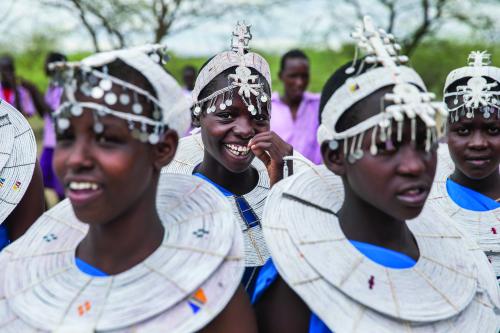The fight against female genital mutilation/cutting (FGM/C) has been fraught with both success and failure, resistance and acceptance. Since Kenya banned the practice in 2011, FGM/C is now increasingly conducted underground, secretly in homes or in clinics by healthcare providers and workers.
The medicalization of FGM/C—defined by the World Health Organization (WHO) as any “situation in which FGM/C is practiced by any healthcare provider whether in public or private, clinic or home or elsewhere”—has received recent media and public attention. Earlier this year, a doctor filed a court case asking the Kenyan government to declare the Prohibition of Female Genital Mutilation Act 2011, which outlawed and criminalized FGM/C, unconstitutional. Further, she wanted the Anti-FGM Board, a body created to help eradicate FGM/C and early marriage, also declared unconstitutional.
The doctor, Dr. Tatu Kamau, argues that the dignity of traditional practitioners of female circumcision is disregarded by the law which has failed to stop FGM/C in the country. She claims that FGM/C is still largely practiced in Kenya and is increasing due to medicalization. In Kenya, there is evidence that scrupulous medical personnel collude with parents to circumvent the law by cutting girls in their homes or in their private clinics away from public view.
This trend is evident in both rural and urban Kenya where 15 percent of women and girls have been cut by a medical practitioner. The practice is especially prevalent in Kisii counties in Western Kenya where FGM/C is nearly universal. Drawing on interviews with girls and women who have been cut by health providers, my research shows that parents are increasingly having their girls, some as early as 5 years old, cut by nurses or other healthcare workers either in homes or in health clinics.
Moraa (not her real name), an 18-year-old college girl from Nakuru in the Rift Valley, explained to me how her mother, a primary school teacher, brought a nurse to their home during school holidays to cut her at dawn when she was barely 8 years old. Moraa feels resentful and bitter towards her parents, especially her mother for colluding with a nurse to have her cut without her consent, and has considered suing her parents for violating her rights. Moraa’s story is just one of many cases of medicalized cutting.
The commercialization and medicalization of FGM/C
Throughout my larger research on FGM/C and early marriage, I came across many stories of medicalization of FGM/C both in rural and urban areas in Kenya. A nurse I spoke with told me that she carries out the cut for money. “Look,” she said, “when parents call me to perform the cut on their girls, both in urban and rural areas or even in my clinic, I respond because they pay me handsomely. Some even pay for my bus fare and accommodation; I travel widely to cut girls and women. I see no reason why I shouldn’t do this. I have not forced anyone to undergo the cut. I simply provide my services to those who need them.”
Medical professionals who perform cutting services claim that they are fulfilling the demands of communities and that they help enhance women’s values and marriageability in communities that do not want to abandon the practice. They believe that by doing so they respect patients’ cultural rights since some are of a mature legal age.
However, the real reason driving this is its economic value. Medical professionals are cutting girls and women for payment, replacing the traditional cutters in rural villages. Additionally, the commercialization of FGM/C helps parents and guardians to avert the law and authorities. The medicalization of FGM/C not only provides legitimacy to the cut but it continues to put millions of girls at risk from the consequences of the cut. It also continues to perpetuate and give tacit approval of the harmful practice by discouraging changed behavior and attitudes, thereby leading to the normalization of the cut in medical spaces.
While the medicalization of FGM/C is not a new phenomenon, its growing popularity is worrying and points to emerging shifts and tensions in the war to end it—a cat and mouse game between resistant communities and authorities. And while the medicalization of FGM/C went under the radar as authorities and stakeholders focused on traditional cutters in rural villages as well as alternative rites of passage, it is now emerging as a new frontier in the war against the harmful practice. Global, regional, and local focus should now shift away from traditional cutters to medical practitioners.
The Brookings Institution is committed to quality, independence, and impact.
We are supported by a diverse array of funders. In line with our values and policies, each Brookings publication represents the sole views of its author(s).









Commentary
How outlawing female genital mutilation in Kenya has driven it underground and led to its medicalization
June 19, 2018